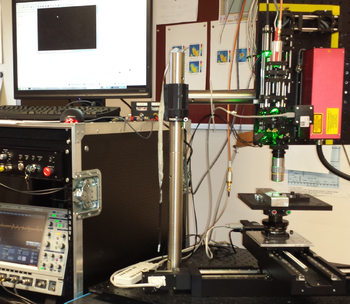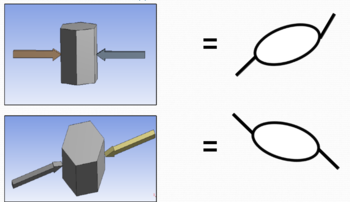Advanced spatially resolved acousto-spectroscopic imaging
Advanced spatially resolved acousto-spectroscopic imaging
PhD Student: Paul Marrow
Project Supervisor: Steve Sharples / Matt Clark
Project Brief: Spatially resolved acoustic spectroscopy (SRAS) is a technique developed in the Applied Optics Group at the University of Nottingham. It can used to image the microstructure and determine the crystallographic orientation of materials relevant to aerospace industries such as titanium,aluminum, steel and nickel alloys. SRAS uses lasers to generate and detect ultrasonic surface acoustic waves (SAWs) to reveal the microstructure of the materials by looking at changes in the ultrasonic velocity of the metal alloys.
The primary goal of this research effort is to expand the capabilities of the SRAS technique, by utilising the incredible benefits that differential measurements afford. Differential techniques - where two opposing signals are subtracted, in the presence of (usually much higher) noise common to both -are capable of extracting information that would otherwise be buried in noise. Similar techniques are used to subtract baselines - removing a large variable signal to reveal an underlying trend, or anomaly. The SRAS technique will be modified in various ways, such that we will be able to extract extra information about the material under investigation, by measuring properties of laser-generated high frequency acoustic waves under two different conditions.
An example of this may be to investigate the dispersion of normally- nondispersive waves to probe properties such as residual stress with respect to depth (from the surface), on a much smaller scale than has previously been achieved. Another possibility is to probe the higher order elastic constants in other words, nonlinear ultrasonics - to get a more thorough determination of crystallographic orientation on certain difficult to determine crystal structures.
The research will explore the boundaries of what is possible with the current state of the art, and push the technique towards its ultimate fundamental physical limits. This will involve a development of the understanding of how elastic waves interact with materials and thus determine their mechanical properties, and a corresponding development of the optical and electronic instrumentation necessary to exploit these interactions. Throughout the period of the research, new inspection and characterisation challenges relative to the aerospace industry will be addressed by application of this techniques.
Conference: Institute Of Physics ( IOP) AFPAC 2015
“Advanced Spatially Resolved Acoustic Spectroscopy”


